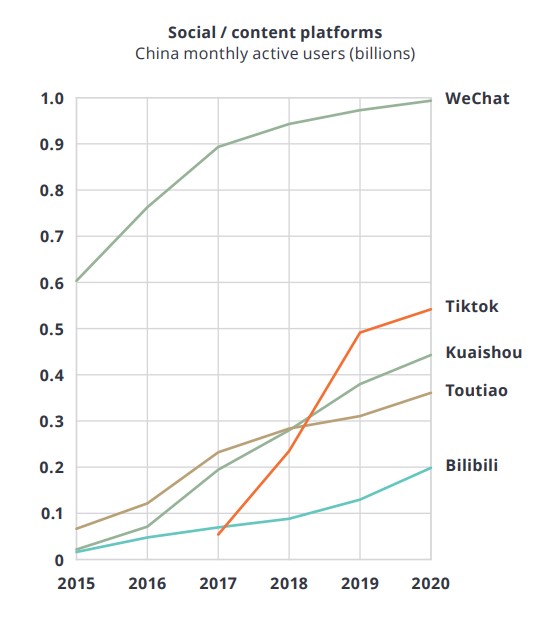Chinese microblogging website Weibo was once the most popular social media platform in China, but not any longer. WeChat now overshadows the app, and newer entrants like Toutiao and Douyin are fast outpacing Weibo's growth. So, is the platform, sometimes dubbed China's Twitter, still relevant to foreign brands looking to make an impact?
In late September 2021, Weibo clocked 573 million monthly active users, having added an extra 62 million users since the previous year. To get a sense of its positioning, see the below graph of other major social platforms.

What is Weibo?
The Sina Weibo 新浪微博 website, or simply Weibo, was launched by Sina Corporation on 14 August 2009. The social platform managed to carve out a niche where other major tech players initiatives failed to launch: microblogging. It has been used by brands successfully in the past to promote products in a variety of ways.
People primarily use their personal Weibo accounts to share text or multimedia content, and includes familiar social functions like the ability to Like, Comment, Repost, Share or Chat. You can also live stream, or upload Weibo stories, which function similarly to Instagram stories and disappear after 24 hours. Your homepage hosts customised content, and you can also use the Discover function to browse trending topics according to categories like Entertainment, News and Sports. Notably, it also hosts a game centre and mobile wallet Weibo Pay, as well as some other, less ubiquitous social media platform functions like Weibo Fit - which records your health data.
Weibo users primarily list being up-to-date on trending news as the primary function of the site. Marketers also use Weibo to check the pulse of Chinese consumers. Some marketers also cite Weibo’s strategic partnership with Alibaba, and its growing e-commerce capabilities, as a reason to keep Weibo in their sights.
Types of accounts
Personal accounts and Weibo user levels
Personal accounts earn user level badges according to how they engage with the platform. They are rewarded with higher levels by engaging with the platform, posting, and sharing other's posts. The user level badge is displayed on the profile introduction page.
Verified accounts
Weibo provides verification for individuals, like celebrities and politicians, as well as organisations, like companies and brands. A verified corporate account allows brands professional features, like fan services, an event centre, data centre, and ad centre, more advanced customisation options and mass messaging. However, verification requires a Chinese business licence or registered trademark.
Marketing on Weibo
Brands can utilise Weibo across the client journey, from brand awareness to securing sales, to building loyalty and empowering brand ambassadors. Clean, concise and interesting content that includes some multimedia element, like video, GIF, or images, tends to do well. Brand content appears within their follower’s newsfeed, from where ideally it is shared. Live video streaming is increasingly popular in China, and brands sometimes partner with Key Opinion Leaders, KOLs, to run campaigns.
KOL Marketing
Brands often turn to Weibo KOLs, who they pay to promote their products on the platform. Taobao and Tmall integrations allow users to be redirected to the relevant page on shopping apps to then purchase the product directly. However, research shows Gen Z is increasingly distrustful of KOL advertising. A recent McCann Worldgroup survey shows 84% of Gen Z believe that the goods recommended by KOLs and influencers are not trustworthy. The report also revealed that, while they are can accurately detect sponsored ads, and feel immune to this kind of brand messaging, they avidly consume user reviews of products.
Paid Weibo advertising
Marketers can purchase display ads within Weibo, that link to the advertiser's homepage. The ads will display on search page results and can also appear on the user’s homepage in a similar way to Facebook Ads. Weibo search engine promotion, meanwhile, focuses on improving your visibility in search results. You can also pay to promote a specific post or account at the top of a user's newsfeed.
Conclusion
While Weibo is an intriguing platform, for foreign brands lacking market recognition in China the entry bar for Weibo remains too high. The cost of setting up a verified account, creating and updating regular trending content and the price of paid media make it a less attractive option than WeChat, or some other up and coming platforms.











